#Altaic
Text
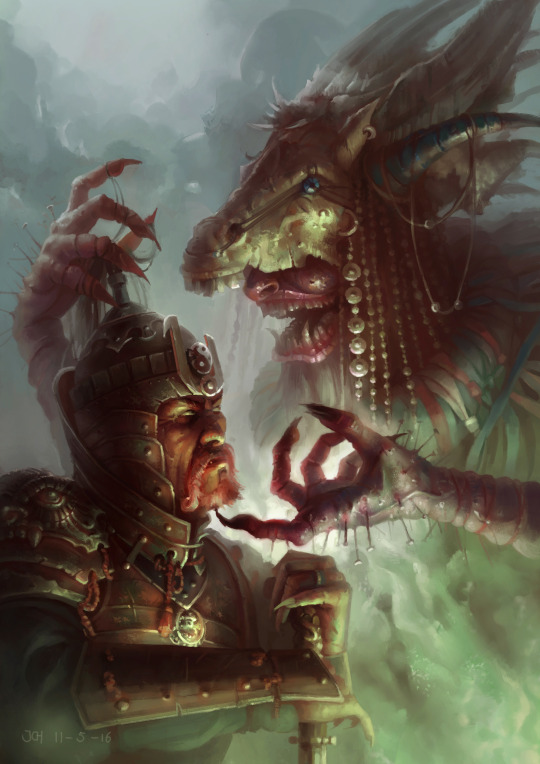
One of my older paintings inspired by Mongolian, Turkic and Altaic mythology. Almost 8 years (!) ago that I made this one while doing a mentorship.
I worked many, many hours on this piece and gave myself plenty of room to make mistakes, something that was essential to my growth as an artists at the time. I am still trying to find the time to go back to study and learn, and see how to bring my skillset to the next level.
Cheers!
JCH
#dungeons and dragons#board games#concept art#fantasy art#tabletop games#digital painting#magic the gathering#character design#ancient history#armor#mongolia#turkic#asian mythology#turkic mythology#altaic#chinese#demon#occult#pagan
73 notes
·
View notes
Text

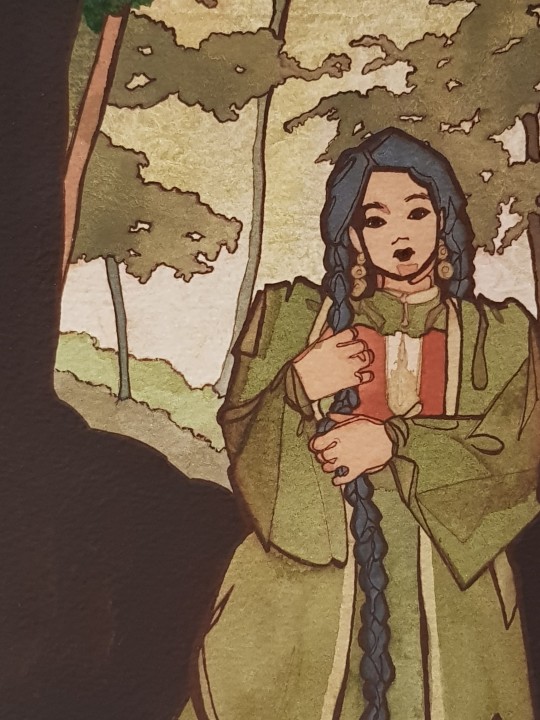
W!P
#my art#tatarstan#tatars#volga#altaic#Volga Tatars#татарстан#ethinicwear#ethnicdress#ethnicart#turkic art#turkic
26 notes
·
View notes
Text
Reposted from YouTube. Altai - Telengits
#indigenous#culture#indigenous russia#important#indigenous russian#fypシ#fypage#russia#colonization#landback#siberian indigenous#siberian music#indigenous siberian#siberian#altai mountain#altaian#altaic#telengit#Telengits#Altai Republic#fyppage#fypツ#native people#indigenous rights#indigenous people
9 notes
·
View notes
Text



Korean date at the coffee shop!
fun fact: Did you know that Turkish and Korean come from the same root, Altaic?
5 notes
·
View notes
Text
the pathologic Kin is largely fictionalized with a created language that takes from multiple sources to be its own, a cosmogony & spirituality that does not correlate to the faiths (mostly Tengrist & Buddhist) practiced by the peoples it takes inspirations from, has customs, mores and roles invented for the purposes of the game, and even just a style of dress that does not resemble any of these peoples', but it is fascinating looking into specifically to me the sigils and see where they come from... watch this:
P2 Layers glyphs take from the mongolian script:

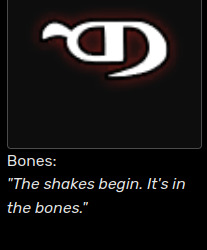

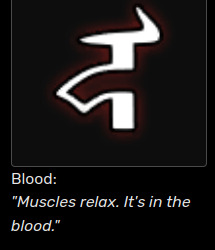

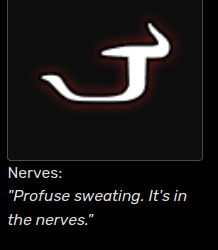


while the in-game words for Blood, Bones and Nerves are mongolian directly, it is interesting to note that their glyphs do not have a phonetic affiliation to the words (ex. the "Yas" layer of Bones having for glyph the equivalent of the letter F, the "Medrel" layer of Nerves having a glyph the equivalent of the letter È,...)
the leatherworks on the Kayura models', with their uses of angles and extending lines, remind me of the Phags Pa Script (used for Tibetan, Mongolian, Chineses, Uyghur language, and others)


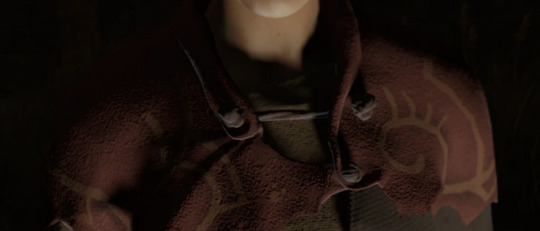
some of the sigils also look either in part or fully inspired by Phags Pa script letters...






some look closer to the mongolian or vagindra (buryat) script

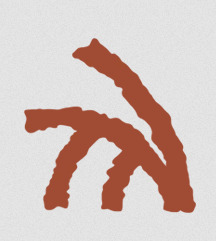
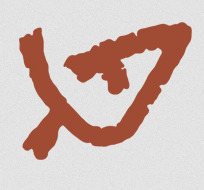

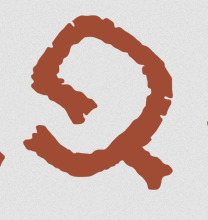
looking at the Herb Brides & their concept art, we can see bodypainting that looks like vertical buryat or mongolian script (oh hi (crossed out: Mark) Phags Pa script):
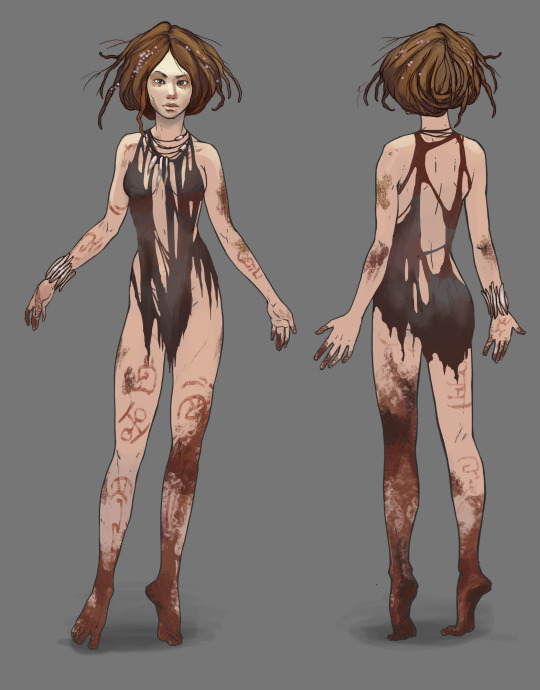
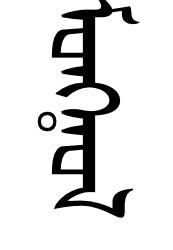
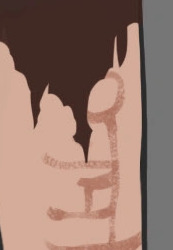
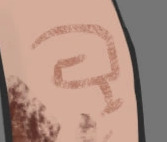

shaped and reshaped...
#not sure how much. what's the word. bond? involvement? not experience. closeness? anyone in the team has with any of these cultures#but i recall learning lead writer is indigenous in some way & heavily self-inserts as artemy [like. That's His Face used for#the p1 burakh portrait] so i imagine There Is some knowledge; if not first-hand at least in some other way#& i'm not in the team so i don't know how much Whatever is put into Anything#[ + i've ranted about the treatment of the brides Enough. enough i have]#so i don't have any ground to stand on wrt how i would feel about how these cultures are handled to make the Kin somewhat-hodgepodge.#there is recognizing it is Obviously inspired by real-life cultures [with the words;the alphabet;i look at Kayura i know what i see]#& recognizing it Also is. obviously and greatly imagined. not that weird for you know. a story.#like there is No Turkic/Altaic/Mongolic culture that has a caste of all-women spiritual dancers who place a great importance on nudity#as a reflection of the perfect world and do nothing but dance to bring about the harvest. ykwim...#like neither the Mongols nor the Buryats nor the Tibetans dress the way the Kin does. that's cos the Kin is invented. but they're invented.#.. on wide fundations. ykwim......#Tengrism has a Sky Deity (Tengri) with an earth-goddess *daughter* whereas the kin worship an Earth-Goddess mother of everything#+ a huge bull. Buddhism has its own complete cosmogony & beliefs which from the little I know Vastly Differ from anything the Kin believes#like. yeah. story. but also. [holds myself back from renting about the Brides again] shhh...#neigh (blabbers)#pathologic#pathologic 2
294 notes
·
View notes
Text
the amount of similar words in Japanese and Turkish is no joke and the more of them I discover that I begin to think that I should probably do my part in contributing explanations to prove the existence of the Altaic language family, which remains hypothetical as of now
Crow - Karga in Turkish, karasu in Japanese
Black - Kara in Turkish, kuroi in Japanese
But - Ama in Turkish, demo in Japanese
Now - Şimdi in Turkish, ima in Japanese
Fear - Korku in Turkish, kowai in Japanese
Wild - Yaban in Turkish, yaban in Japanese
Good - Iyi in Turkish, ii in Japanese
What - Ne in Turkish, nani in Japanese
Why - Neden in Turkish, nande in Japanese
This will only make more sense if you are familiar with both languages and know how to read i.e., the consonant sounds.
Will be updating when I find more examples
#langblr#turkish langblr#japanese langblr#turkish language#japanese language#methinkspost#language#altaic language family#linguistics
10 notes
·
View notes
Text
I miss when I was in highschool and obsessed w archaeolexicology. Just learned "wolf" in Mongolian is "chono". What the fuck
#kwon#like chien...... like in french.....#to my knowledge pie is unrelated to proto-turkic or altaic. whatever.#might b a loanword from pie but it goes far back there. might b a coincidence man idk.#see also: papillon and papalotl#which im like 98% sure are totally unrelated. but that 2% tho.
2 notes
·
View notes
Note
what language(s) are you studying?
Hello! I've been learning Spanish through my entire 1-12 public school journey. Because of this I can feel my way through Italian, and other romance languages, but can't speak them vocally.
I started teaching myself more Latin since a class I took in 2015.
My biggest interest right now is Ukrainian, due to my great grandparents hailing from Odessa. Though I've studied the Cyrillic alphabet intensely, so I can translate Russian, Romanian, etc. As well! (I usually can't understand what the words I translated mean though lol). I adore Cyrillic languages because there aren't hidden rules about the letters. Everything is pronounced phonetically :D
I noticed studying the roots and cultures surrounding these languages has exponentially improved my learning experience, so I'm picking up old chinese to test my theory (instead of tackling one of the several china has these days). Also considering starting with Ural-altaic (which if that proves to be difficult, I'll switch to Polynesian) for Japanese, korean, etc. As well, but I'm stoked to learn both these languages are syllabary because I am very much a visual learner.
I don't know if that's the right approach, but the research I've been doing goes far beyond a couple courses in Duolingo, so I hope it all pays off!
Thank you for asking :3
#linguistics#language learning#learning languages#ukrainian#cyrillic#romance languages#spanish#latin#old Chinese#ural Altaic#ask#thanks for the ask!#asks open#anon ask#send asks
4 notes
·
View notes
Text

ok
#another fun index diachronica find#yes i browse it for fun. im autistic#this is from the section 8.2 proto-altaic to proto-korean#linguistics
4 notes
·
View notes
Text

Painting I made from quiet a few years ago, where I was heavily inspired by Altaic cultures. This is a Tungusic/Siberian huntress with her trusted companion.
Hope you like the piece!
Best,
JCH
#dungeons and dragons#board games#concept art#fantasy art#tabletop games#digital painting#magic the gathering#character design#ancient history#armor#monolia#siberia#turkic#turkey#altaic#huntress#pagan#shaman#viking#celtic#germanic#tribal
87 notes
·
View notes
Text
2,300-Year-Old Plush Bird from the Altai Mountains of Siberia, c.400-300 BCE: this figure was crafted with a felt body and reindeer-fur stuffing, all of which remains intact

This plush bird was sealed within the frozen barrows of Pazyryk, Siberia, for more than two millennia, where a unique microclimate enabled it to be preserved. The permafrost ice lense formation that runs below the barrows provided an insulating layer, preventing the soil from heating during the summer and allowing it to quickly freeze during the winter; these conditions produced a separate microclimate within the stone walls of the barrows themselves, thereby aiding in the preservation of the artifacts inside.
This is just one of the many well-preserved artifacts that have been found at Pazyryk. These artifacts are attributed to the Scythian/Altaic cultures.
Currently housed at the Hermitage Museum.
#archaeology#anthropology#history#artifact#artifacts#siberia#scythians#archeology#museum#amazing#interesting#stuffed animals#ancient history#prehistoric#crafting#felt art#art#prehistoric art#hermitage museum#human nature
53K notes
·
View notes
Text
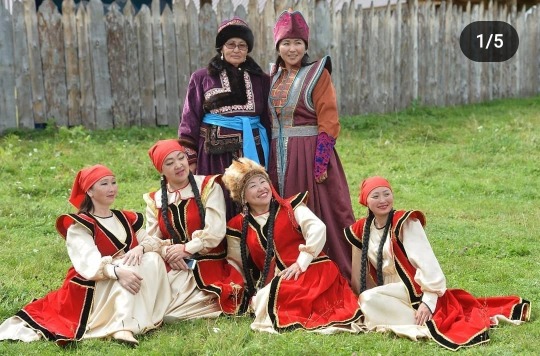
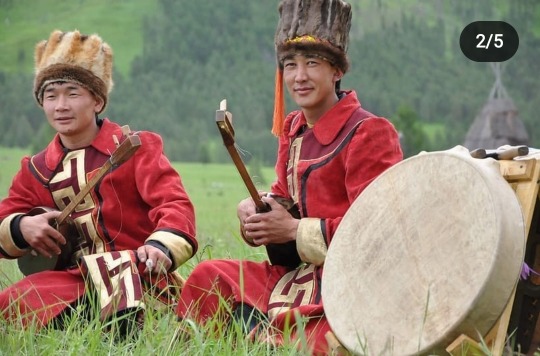

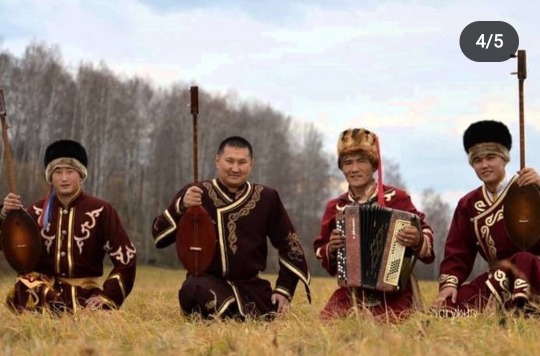

I want to tell you about one disappearing nation, living in Russia, the Telengits - the indigenous people of the Altai Territory. According to the 2010 census, 3712 people remained. ⠀
In the southern Altai, to whom the telengits belong, the Mongoloid anthropological type prevails: often because of their appearance they are compared with Kalmyks. ⠀
In connection with the prevailing nomadic way of life, the traditional house of the Telengits was a yurt, felt or covered with birch bark.
⠀
By the beginning of the 20th century, pentagonal or hexagonal log cabins gained popularity. In the center of the dwelling, a hearth was established, the inner space was divided into female - on the right, and male opposite.
⠀
The main occupation was cattle breeding. Sheep, horses, goats, cows, yaks were raised. In winter, pastures were organized in flat areas, herds were taken to the mountains. In parallel, they hunted birds, deer, bears, wolves, lynxes, sables.
⠀
There were many hunting rituals, for example, after killing an otter, it was customary to leave it for a day in the forest. It was believed that this is the beloved animal of the God of the dead, so after death several dozen souls can go out of it.
⠀
The traditional telengit musical instrument is topshur. It is a mixture of lute and plucked balalaika. The tool was made of pine or sneaker; twisted hair from the tail of the fastest horse in the herd was used as strings. This tradition is symbolic: it was believed that the topshur is the horse of the narrator, on which he rushes into the world of epic battles.
⠀
The traditional religion of telengits is associated with shamanism. It is believed that the good god Ulgen rules the world, and Erlik rules the underground kingdom of spirits. Some legends mention that this is one two-faced deity.
⠀
The telengit world was filled with many patron spirits under the common name "eesi". It was believed that they could appear in front of people in the form of animals and birds or take on a human form.
⠀
Rites of burial, weddings, births, prayers were held with the participation of shamans.
⠀
Today 81% of Altai people profess Burkhanism: a combination of shamanism⬇️
#indigenous#culture#indigenous russian#indigenous russia#russia#important#colonization#fypシ#fypage#landback#Altai#altaian#Altaic#indigenous people#Telengits#Telengit#Beautiful#Love#Land back#Decolonize#russian imperialism
106 notes
·
View notes
Text
Not 100% about the main discussion but if I would share my own experience as a language learner, duolingo's unnecessary competitive way of teaching always bothered me. It was nice at first, but as you go on more and more days and building your rank higher and higher...it is not about learning the language anymore. It turns into a horse race.
I was studying German and Japanese on that app but since the day I discovered the japanesepod101.com and innovativelanguage.com 's other language teaching sites and their youtube channels, I have been improving way better! I am able to read paragraphs in Hiragana and Katakana very well and now I'm studying the Kanji and everyday phrases. All though my improvement in Japanese is probably because of my native tongue - Turkish - being a sister language with Japanese (Ural-Altaic language family) i think with innovativelanguage everyone can pull the language learning off! AND NO THIS IS NOT SPONSORSHIP. I JUST RESPECT AND LOVE THEIR TEACHING METHODS.
Edıt: Thank you for the people who informed me about the real relationship with Turkish and Japanese! My debatable statement was rather arrogant I assume. So I apologize for the misinformation. Long live the Turkic family!
2K notes
·
View notes
Text
URALIC LANGUAGES 101
an over-simplified guide for people who have never studied them
from real questions I have received
as I am finally qualified enough to talk about them
WHAT?
A language family spanning (mostly northern) Eurasia. The three biggest languages by amount of speakers are Hungarian, Finnish, and Estonian.
WAIT, WHAT DO YOU MEAN THERE ARE MORE?
The Sámi languages might be the most famous of the "smaller" Uralic languages, but have you heard about Karelian? Udmurt? Hill Mari? Nganasan? There are 38~42 Uralic languages that we know as of today.
WHERE ARE THESE OTHER LANGUAGES?

(image description: the locations of the Uralic languages on a map. The Uralic languages span from modern-day Hungary, the northern Nordics, and northern Russia.)
(CONTINUE READING UNDER THE CUT)
BUT I THOUGHT HUNGARIAN WAS ALTAIC / RELATED TO TURKISH?
Modern science links Hungarian to the Uralic languages. The links to "Altaic" (many on the field don't believe in the Altaic theory) and the Turkic languages are speculative.
ARE THEY RELATED TO ENGLISH?
No, they are a separate language family. English is more related to Russian than Finnish or Hungarian.
HOW DID THEY END UP WHERE THEY ARE NOW?
We still haven't figured this out, but the Uralic peoples' proposed homeland is often located north of Central Asia.
HOW DO THEY KNOW THESE ARE RELATED TO EACH OTHER?
Linguistics uses many different ways to find out relations between languages. With the Uralic languages, there are many cognates (=words that come from the same root word) that exist in most languages. These words can be used to reconstruct Proto-Uralic, a hypothesis of what the original Uralic people might have spoken.
Examples:
"tongue, (language)" (Finnish) kieli, (Estonian) keel, (Veps) kel', (N.Sami) giella, (Erzya) keľ, (Beserman) kål, (E.Khanty) köł, (Mator) kašte
"two" (Finnish) kaksi, (Courland Livonian) kakš, (Ter Sami) kïkktʼ, (Moksha) kafta, (Mari) kok, (Komi-Zyrian) kyk
HOW DO THESE LANGUAGES SOUND LIKE?
Here are selected samples of text from a few different branches of Uralic languages:
NGANASAN: Mənə ńinti̮ˀam ńiluməni̮nə inśüδüˀ, mi̮əďindi̮ˀam hüətə. (I never sledge in my life, I always go by foot.)
SELKUP: Nılʲčik qumɨp mee qontɨrämɨt čääŋka. (We have not seen such a person.)
BESERMAN: Picʼi pilə̑ sʼed jə̑ rcʼijenezlə̑. (To the little boy with black hair.)
MANSI: Mənə kńigaðəmtu miśiəm. (I gave him/her the book.)
NORTH SÁMI: Sáhpán njuikii girjji duohken. (The mouse jumped from behind the book.)
TVER KARELIAN: Mie hüviin zdaičin igzamenati miun, na felÍdšerku pandih. (I passed the exams well and I was put [to work] as a nurse.)
If you have more questions about these languages, feel free to ask me! I am no professor but am majoring in this at the university so I know more than the average person hehe
67 notes
·
View notes
Text
I'm curious about something... (and fucked up the last poll. if u saw no u didnt)
*As in, you enjoy listening to it, like it aesthetically, think of it as attractive, whatever. This is NOT about whether or not you understand the language or if you like whatever you associate with it or whether or not it's "useful" (e.g. If you do not speak a single word of japanese but really love how it sounds, vote for it. if you think italian sounds sexy but don't really care about visiting Italy, vote for it. If you like the look of the hebrew alphabet but not how it sounds, DONT vote for that. It's about the sound.)
Before you come at me: These categories are not perfect. Some of them are sub-categories of a bigger family (Indo-European), some languages are in the same category but sound really different etc etc. I had to leave out or group some of these together in a way that I felt made most sense for what I wanna know & the demographics of this site. I'm not a linguistics expert.
Feel free to share your thoughts in comments or tags! 👍
#languages#Last time i made a poll that got some traction i had soo many ppl get mad. and this one actually does have some non-ideal choices#hence the huge disclaimer. sorry#anyway vote before you read this but#i am curious cause i allllways heard ppl talk about how nice romance languages sound (usually italian or french)#but i always had just. a different taste ig. i dont really like how vowel-heavy those 2 are#idek what to vote for myself tbh. i got a thing for persian rn (dont even speak one word of it tho) and also mandarin#but overall i gotta go with afroasiatic ig. for now at least#i thought about making this a two parter also asking about what ppl actually spoke but making this one was enough work lmao#re did the entire thing to make it 1 week and added more stuff too just now#txt
62 notes
·
View notes
Text
ive posted about this before but its truly lamentable that "altaic" is the name for the controversial theory and not the name for the turkic language family
37 notes
·
View notes